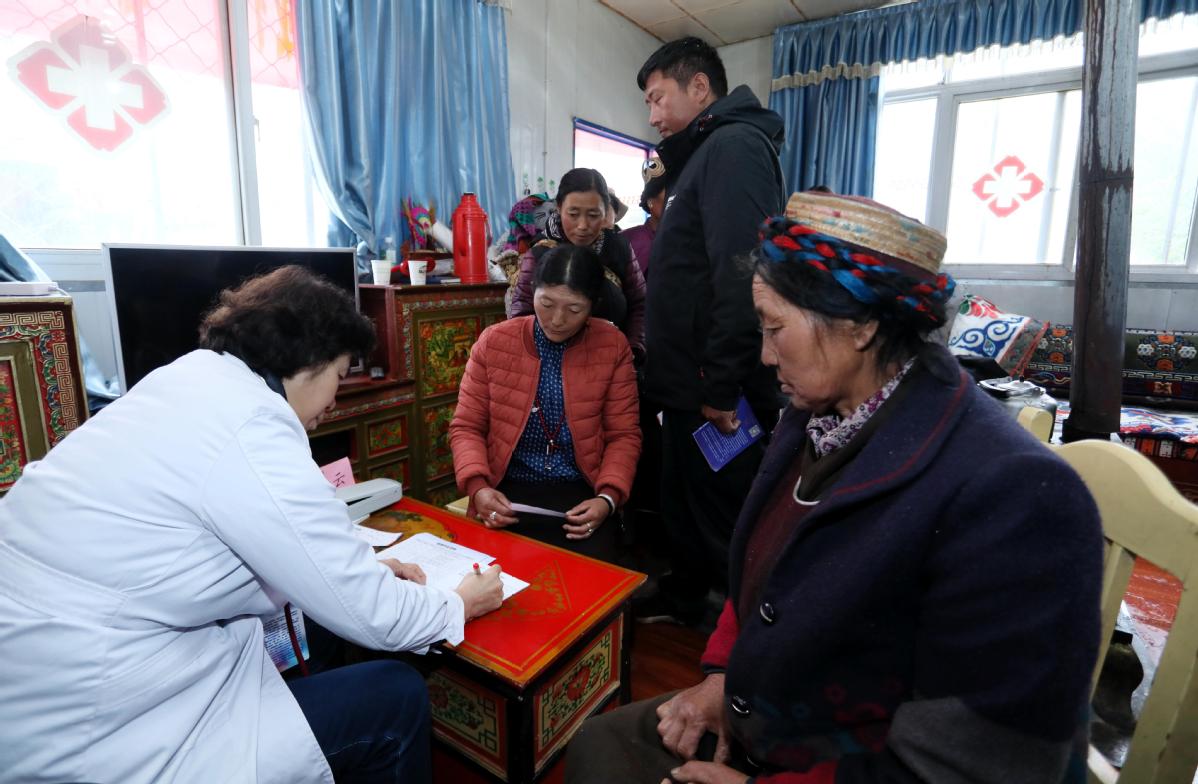Visiting medics help Tibetans live the high life


Free programs are paying dividends for local people. Wang Xiaoyu reports from Nyingchi, Tibet autonomous region.
Editor's note: This is the ninth story in a series about the Tibet autonomous region, focusing on the area's history, poverty alleviation measures, healthcare, and the cultural and business sectors.
Last month, a surprisingly late spring snowfall dusted the home of Sherab Dorje in Kongpo'gyada county, Tibet autonomous region. However, that was the least of his family's worries as the 4-year-old, whose cheeks were flushed after days with a high fever, suddenly collapsed and began convulsing on the floor.
He was rushed to the local hospital, where he received medication to reduce the fever; a quick fix to relieve his potentially life-threatening breathing difficulties.
However, the treatment could not prevent the problem from recurring. While it was the third time that month that the Tibetan boy had experienced seizures, he has had convulsions since he was less than 12 months old.
Eventually, the affliction is likely to be tackled at the roots, because Sherab Dorje recently saw a doctor from Beijing who was visiting the county for two days to provide residents with free consultations and treatment.
Communities across Tibet have benefited from wide-ranging medical assistance programs that have been introduced in the past few decades.
The most notable is a project initiated in 2015 by several government bodies, including the National Health and Family Planning Commission, the predecessor of the National Health Commission.
It has sent four groups totaling 660 medical professionals to eight health institutions with the aim of improving the healthcare infrastructure and establishing well-trained medical teams.
By the start of last month, people in Tibet had access to more than 1,000 treatments that were previously unavailable in the region, and nearly 850 advanced treatment methods or medical technologies had been introduced, according to Wang Yunting, deputy director of the regional health commission.
Moreover, six large cities are now home to at least one top-tier hospital each, he added.
Medical assistance has also been provided in smaller towns and villages tucked away on the massive Qinghai-Tibet Plateau, as volunteer programs launched by social institutions have joined the efforts to improve people's well-being and foster greater health awareness.
























